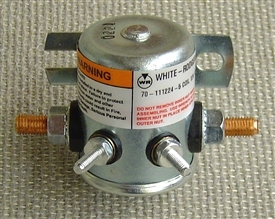 Today, I picked up Tricia’s Volvo XC60, which arrived at the local dealer this week after an “intensive examination” by Customs and Border Patrol delayed its entry into the USA.
Today, I picked up Tricia’s Volvo XC60, which arrived at the local dealer this week after an “intensive examination” by Customs and Border Patrol delayed its entry into the USA.
I used the navigation system for the first time today because it was inoperable when we picked up the car in Sweden. (It comes pre-loaded with North American map data.) I input a destination, started it up and turned on the voice to hear it announce the route it had selected.
I put the car into gear and turned on the directional signal. While the system was announcing the route, I noticed that there was no turn signal clicking noise.
Now, I don’t know about you, but I gotta have my click. First, I thought it was some kind of manufacturing defect. The dash turn signal indicator was flashing and I assumed a brand-new car wouldn’t have burned out bulbs. Next, I thought, ugh, what a design miss. How could the engineers design out the clicking noise everyone relies on to know whether or not their turn signals are on?
In the time it took me to think it through, the voice announcement ended and voila! the clicking noise returned.
This astounded me even more. It means that the click must be digital…and it must be playing back through the sound system. As I considered this, I realized that the days of a fundamentally mechanical car are long gone. The old-school mechanical solenoid is obsolete. I remember when you used to have to fish up under the dash to find the turn signal solenoid when it failed. In the XC60, I’d need the source code for the infotainment system to find it.
This XC60 is a thoroughly digital device. It just happens to be an automobile. I suspect there’s more software is in this car than is in my DSLR or my iPad or my smartphone. Here’s a partial list of systems in the XC60 that are software-driven: radar and digital image processing to automatically brake the car if you get too close to a car in front, logic to permit the cruise control to automatically follow the car in front, ABS, DSTC, image processing to sense cars in blind spots and sensors in the shocks that can be set to deliver varying suspension rates. Clearly, the engine and transmission are digital, too (the car runs on regular or premium, so a knock sensor must be affecting the spark plug timing to prevent pre-detonation).
And I suspect my wife’s XC60 is to a Chevy Volt as an IBM PC XT of 1983 is to a Core i7 desktop of 2012. In short, as blown away as I am by this car, I’ll bet that hybrid and electric cars are even dependent on software.
So, bye-bye mechanical turns signals…hello, MP3 turn signal clicks.
Leave a Reply